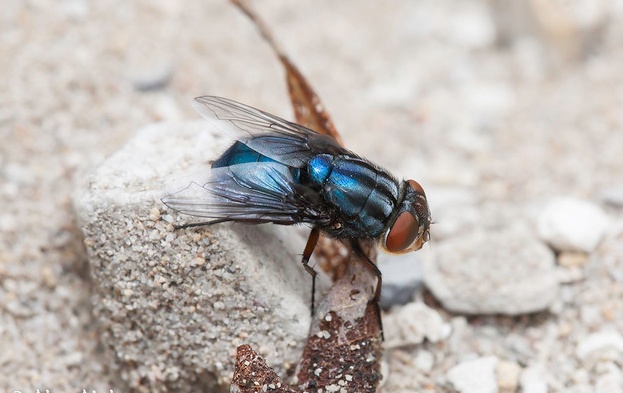
Millions of flies were produced weekly by this fly breeding facility at the east of the Panama Canal. And the said establishment is jointly operated by the Panamanian and United States government.
But before you start making conspiracy theory against the government, you need to know immediately that this is practiced is a scientifically proven method of controlling the population of pests that bring million dollars worth of damages annually.
Killing the population by breeding more?
These larvae that dine on milk, eggs and cow blood are not the babies of your typical houseflies. They will soon grow up to New World screwworm flies. These larvae are flesh-eaters, and it has brought so much horror to the world that taxonomists called it Cochliomyia hominivorax -- which can be roughly translated as "eater of man".
And to combat the destruction these flies brought, these flies were rendered sterile through exposing them to radiation.
Female flies mate only once throughout their lifespan, so if they mate with a sterile male, there will be no new larvae, says Pamela Phillips, technical director of the USDA's Screwworm Program.
This technique is known as "sterile insect technique" and has been proven to be effective. For instance, the same method was done in Unguja Island in Zanzibar to eradicate tsetse flies, an ancient insect which can cause sleeping sickness to humans.
Screwworm fly outbreak used to be a problem in the US before it was eradicated in 1966 for using the same technique. The US Department of Agriculture considered this as one of the most successful "entomological success stories of all time".
Saving an endangered deer species
Unfortunately, outbreaks still happen sometimes, and this is why the facility continued its operation, with the recent one happening in 2016 which almost pushed an endangered deer species to extinction.
To win a female's heart, male Key deer fight with each other which result in multiple wounds especially on the head, neck and shoulder. And during the summer of 2016, these injuries became infected with screwworm larvae.
Jon Wallace of the U.S. Fish and Wildlife Service (USFWS), who oversaw the crisis, described this scenario as "pretty darn horrific". He even confessed that they had no choice but to euthanize deer to prevent the offspring from being infected and worsening the problem.
By combining the anti-parasitic medication and the sterile flies from Panama, the screwworms were extinguished, and the Key deer became free from infection.
Wallace also boasted that no fawn or mother dear died from the incidence.
Enrique Samudio, general director for the Panamanian Ministry of Agriculture, said that the country has a lot of pride in the program especially since it is "unique in the world".
Up to this date, scientists release sterile screwworms weekly to maintain the progress. They specifically picked male species only so to overwhelm the wild and decrease the available female flies for fertile male ones.
Screwworm flies were at least three times bigger than standard houseflies. They have shiny blue exterior and are reported to capable of laying eggs on a wound as small as tick bites.
Before the sterile technique was officially conducted, the livestock industry suffers from lost up to $20 million yearly.
© 2025 NatureWorldNews.com All rights reserved. Do not reproduce without permission.





